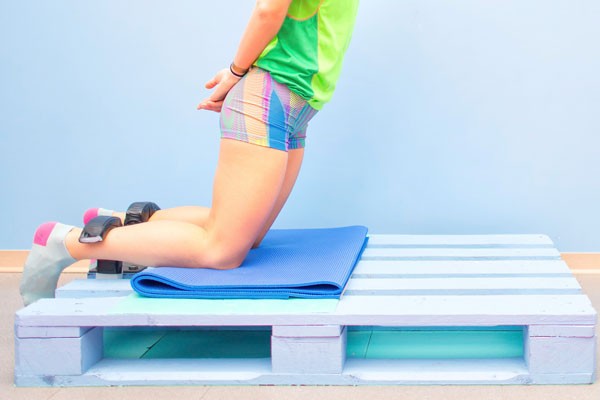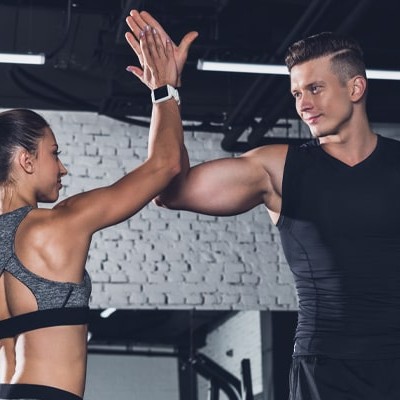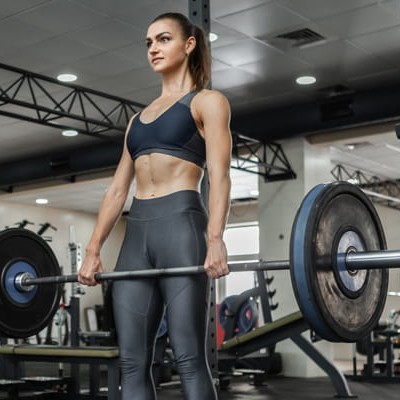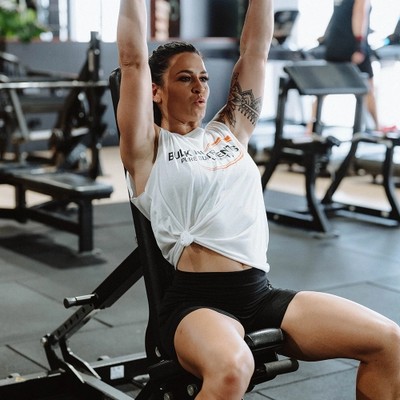New Hamstring Training Research Offers New Training Tips

New Hamstring research
This recent study investigated how our hamstring fibres are recruited and the force they generate during three different exercises. As the researchers put it, the information here is "lacking."
So they set out to investigate this, with specific attention paid to how the hamstring long head muscle fibres behave.
The three exercises performed by the ten male participants in their twenties were:
- The Nordic hamstring curl
- Single-leg Roman chair
- Single-leg deadlift
Here are these exercises in action:
Article: https://onlinelibrary.wiley.com/doi/epdf/10.1111/sms.14158
Video: https://osf.io/zfbwa/
Experimental set-up for the single-leg deadlift (A), Nordic hamstring curl (B), and the single-leg Roman chair hold (C)
And for a quick anatomy snapshot, here is the long head of the hamstring:
Article: https://geekymedics.com/muscles-of-the-posterior-thigh-hamstrings/
Image: https://geekymedics.com/wp-content/uploads/2020/06/biceps_femoris.jpg
Ok, so what did they find?
- Mean fascicle length was highest in the deadlift, followed by the roman chair, and Nordic hamstring curl (Fascicle length is one measurement of muscle architecture).
- Hamstring long and short head, along with the semitendinosus (see below) and semimembranosus peak forces were generally higher in the Nordic hamstring curl compared to the roman chair and deadlift
- While mean forces during the eccentric phase (on the way down during a muscle contraction) were generally not different between the Nordic hamstring curl and roman chair.
- Peak forces in the Nordic hamstring curl coincided with low hamstring long head and semimembranosus muscle activation, but the Nordic hamstring curl generally has the highest peak hamstring muscle forces and results in more fascicle lengthening when compared to the deadlift and roman chair.
- The Nordic hamstring curl therefore may be the most effective to promote increases in fascicle length.
- While the Nordic hamstring curl may be effective to promote hamstring short head and semitendinosus strength adaptations, the roman chair and single leg deadlift may be more effective to promote strength increases in the hamstring long head and semimembranosus.
So it's interesting stuff: Nordic hamstring curls should definitely be part of our training, as they might be the best for fascicle length (one way in which our muscles can get larger, and one of three parts of our muscle architecture).
And the best part is we don't need to do ONE exercise for hamstring training. Multiple is a good idea. And so Nordic curls in concert with single-leg deadlifts and Roman chairs are a great idea to ensure strength increases in the hamstring long head and semimembranosus. That way, we're covering many bases.
How many sets and exercises you do is up to you, but beginning with Nordic curls might be a good idea when you're at your freshest. Performing Nordic curls on the lat pulldown is good, too.

How to do Nordic curls on the lat pulldown
See how to do Nordic curls on the lat pulldown
- Step 1: Start at the top with your feet firmly locked in under the knee rest on the lat pulldown as seen above. Make sure the knee rest (that's where his heels are, not to be confused with the pad his knees are on) is as low as possible, as even a setting higher makes it possible for your feet to slip out. Start slightly angled forward as you can see from the starting position image above.
- Step 2: Come down slowly (3-4 seconds) from an upright position towards the ground, always with your hands out for safety. You can see our subject has an esky there to push off. Always start with that (but a bench, instead) and as you get more confident, use the floor to push off.
- Step 3: Push off the bench/floor with your hands and be sure it's not a big torso thrust, but your hamstrings that move and "lift" you back to your starting position. The difficulty of the exercise will be in how much you push yourself off the floor or bench, making it either easier or harder to return to the starting position.
It's really important to remember that on the way down to the floor, you come down slowly, over about 3-4 seconds, focusing on your hamstrings doing the bulk of the work. Again, ensure the knee pads on the lat pulldown are right down low, and are firmly in place.
And we must stress again the key part to making the exercise harder: the less you push off the floor, the harder the rep back up is.
Eventually, you'll be able to perform around 8-10 reps. And as you get more experienced, you'll be able to push less off the floor, and even take longer on the eccentric movement for added work for your hamstrings.
And you can apply the important muscle growth principle of progressive overload by utilising a weight vest.
What we can take away from the study
Knowing about these three hamstring exercises featured in the study puts us in a far better place than most. For example, the lying hamstring curls are a favourite but aren't that efficient.
The more a muscle is stretched and asked to lift the weight, the better it is for muscle growth.
This is called stretch-mediated hypertrophy.
Range of motion isn't defined by exercise, but rather by joint.
So whilst you might perform an exercise to its "full range of motion", it doesn't mean you're working a particular muscle to its full range of motion.
And this brings us to seated hamstring curls; when compared to lying hamstring curls, they are better because a deeper stretch in the hamstring occurs when we bend at the hips (ie, when we sit down for the exercise).
The bottom line on nordic hamstring curls
Is that nordic hamstring curls are a great exercise for developing your hamstrings, as are roman chairs and single-leg deadlifts. The Nordic hamstring curl may be the most effective to promote increases in fascicle length, and hamstring short head and semitendinosus strength adaptations. But the roman chair and single leg deadlift may be more effective to promote strength increases in the hamstring long head and semimembranosus. Focus on your hamstrings for large legs, and consider these exercises to achieve maximal hamstring growth.

Dayne Hudson
Like many, Dayne was once desperate to lose weight and get into shape. But everyone he asked, everything he read, lead to the same place... nowhere.
His journey started there - researching science journals and completing a Sports Nutrition Specialist qualification so he could make weight loss easier.
References:
- Van Hooren B, Vanwanseele B, van Rossom S, Teratsias P, Willems P, Drost M, Meijer K. Muscle forces and fascicle behavior during three hamstring exercises. Scand J Med Sci Sports. 2022 Mar 20. doi: 10.1111/sms.14158. Epub ahead of print. PMID: 35307884.
- Yanagisawa O, Fukutani A. Muscle Recruitment Pattern of the Hamstring Muscles in Hip Extension and Knee Flexion Exercises. J Hum Kinet. 2020 Mar 31;72:51-59. doi: 10.2478/hukin-2019-0124. PMID: 32269647; PMCID: PMC7126262.
- Maeo S, Huang M, Wu Y, Sakurai H, Kusagawa Y, Sugiyama T, Kanehisa H, Isaka T. Greater Hamstrings Muscle Hypertrophy but Similar Damage Protection after Training at Long versus Short Muscle Lengths. Med Sci Sports Exerc. 2021 Apr 1;53(4):825-837. doi: 10.1249/MSS.0000000000002523. PMID: 33009197; PMCID: PMC7969179.
- Peterson MD, Pistilli E, Haff GG, Hoffman EP, Gordon PM. Progression of volume load and muscular adaptation during resistance exercise. Eur J Appl Physiol. 2011 Jun;111(6):1063-71. doi: 10.1007/s00421-010-1735-9. Epub 2010 Nov 27. PMID: 21113614; PMCID: PMC4215195.
- Images from unsplash.com 1.
Related Blogs

Here's Why Nordic Curls Are The Best Hamstring Exercise
Posted by Dayne Hudson
Estimated reading time: 7 minutes

The Best Hamstring Exercises for Muscle Growth
Posted by Dayne Hudson
Estimated reading time: 5 minutes

How to Blast Your Legs With Kettlebells
Posted by Dayne Hudson
Estimated reading time: 5 minutes




























